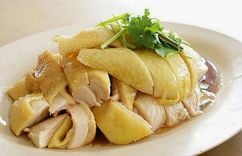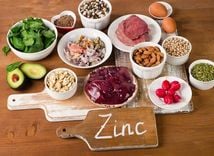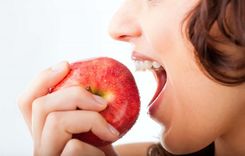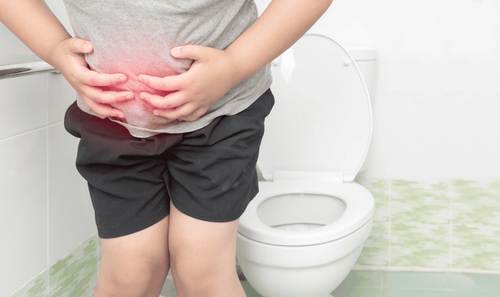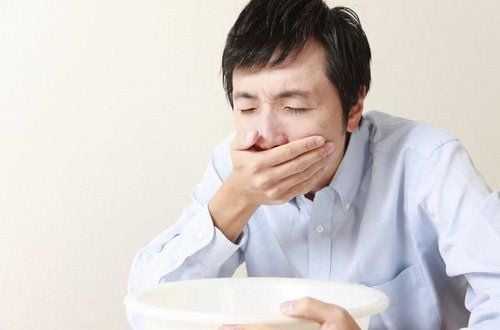Cassava is a food made from the roots turned into tubers of the Manihot cassava plant of the Euphorbiacae family. Cassava peel contains a heteroizite, which when placed in water will be hydrolyzed into hydrocyanic acid, acetone and glucose. Therefore, the toxicity of cassava is mainly caused by hydrocyanic acid. If about 20mg of this substance is absorbed by a person weighing about 50kg, cassava poisoning will occur and 50mg will lead to death.
1. Why do we get poisoned when eating cassava?
Cassava is a food made from the roots turned into tubers of the Manihot cassava plant of the Euphorbiacae family. In cassava there is a toxin of the glucoside type, when encountered digestive enzymes, water or acid will hydrolyze and release hydrocyanic acid (HCN), a potentially deadly poison. The lethal dose is 1mg/kg body weight. For adults, the poisoning dose is 20mg of cyanhydric acid, the lethal dose is 50mg of cyanhydric acid for adults weighing about 50kg, for the elderly, children and frail people, the dose will be lower. Symptoms of poisoning can be severe acute or mild poisoning depending on the amount of cassava consumption.
Any type of cassava contains glucosides with an average content of 3-5 mg%. The more bitter the cassava tastes, the higher the glycoside content, sometimes up to 10-15 mg%. Adults only need to eat about 200 grams of this cassava and it can lead to poisoning. Cases of severe cassava poisoning are often caused by eating raw cassava, undercooked boiled cassava, grilled cassava or eating it’s peels. If cassava is grown in a new land and has a more bitter taste, the higher the amount of toxins contained inside increases.
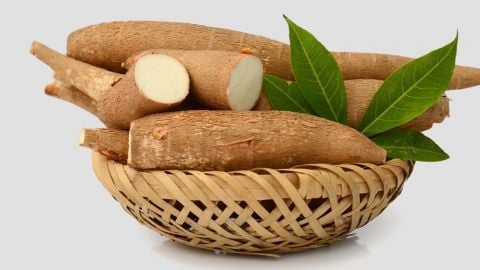
2. Symptoms of cassava poisoning
Cassava is a popular food in Vietnam. When eating cassava that is not thoroughly processed, you can get cyanhydric acid poisoning. The cassava peel contains a heteroside that, when in water, will be hydrolyzed into cyanhydric acid, acetone and glucose, so the toxicity of cassava is mainly due to cyanhydric acid. Severe acute cassava poisoning often occurs in children under 5 years old or eating cassava when hungry.
When the toxic cyanhydric acid enters the blood, it will inhibit the activity of the cytochrome oxidase enzyme, causing cells and organs to be unable to use blood oxygen, leading to tissue oxygen hypoxia In addition, it also affects the respiratory, vasomotor, and heat regulation centers in the medulla,...
Symptoms of cassava poisoning usually appear about 3-7 hours after eating. Depending on each case, cassava poisoning has different clinical symptoms, including severe acute poisoning or milder and slower poisoning.
2.1. When suffering from severe acute poisoning
The patient feels nausea, headache, dizzy, the irritated tongue becomes numb. Then signs of neurological disorders appear, the patient is in a state of fear, panic, convulsions, muscle spasms and stiff jaws like signs of dilated pupils, tetanus, slow breathing, pale face, respiratory paralysis and heart,... If the patient is not treated promptly, he or she may die within 30 minutes. In contrast, if emergency and timely treatment is given, the patient will escape the emergent situation and their health condition will be completely restored without leaving any sequelae.
2.2. For cases of mild poisoning
It usually occurs slowly and symptoms such as: dizzy, headache, aches, red eyes, dry throat and nose, nausea, constriction of the throat, fatigue, aches, dizziness, etc. The patient just needs to lie down and rest and drink a glass of warm sugar water.
3. Treatment of severe acute cassava poisoning
When suffering from cassava poisoning with severe acute symptoms, it is necessary to make the patient vomit using normal measures and quickly transfer the patient to the nearest hospital for further treatment. At the hospital, perform gastric lavage with 1‰ KMnO4 solution. Use methylene blue such as Coloxyd, Glutylene 1% solution, 10ml tube for slow intravenous injection. If the poisoning is severe, inject 1 ampoule every 10-15 minutes. Within 24 hours, 5-6 ampoules can be injected for adults.
Can be replaced with 1% sodium nitrite 10ml and slow intravenous injection, if methylene blue is not available. Then inject 20% sodium hyposulfite with 10-20 ml slow intravenous injection. Infuse 30% glucose solution 500ml and isotonic glucose solution, give the victim sugar water to drink. Respiratory and cardiovascular support by injection camphor, caffeine, lobelin, even oxygen and respiratory support if needed.
4. Prevent cassava or bamboo shoots poisoning
Cassava is a popular food. When eating cassava, it is necessary to understand and pay attention to processing to limit the toxicity in cassava and prevent poisoning, to prevent unfortunate deaths.
For cassava, cyanhydric acid is concentrated mainly at the two ends of the tuber, the peel and core of the cassava tuber.
The toxicity of cassava are very volatile, they dissolve easily in cold or hot water. When oxidized or combined with sugar, it will be converted into a non-toxic substance. Based on this characteristic of cassava, if you know how to process it properly, the toxic content will be eliminated mostly. After cassava is peeled, soaked in water for a while, boiled and cooled, the toxic content is reduced to only 30% of the original.
The toxic content will be reduced to very little and not enough to poison people when processed in the form of cutting into dried slices, processing into cassava flour, cassava... To prevent cases of cassava poisoning, especially for children and not to die from cassava poisoning, people need to take good measures such as not eating a lot of cassava at the same time when being hungry. do not allow children under 3 years old to eat cassava.
When processing cassava, you should peel off the skin and soak it thoroughly in water for a while before boiling it. When eating, if you find cassava has a bitter taste, you should throw it away. It is best to eat cassava with sweet sugar or rice sweet potato to neutralize toxins. Precaution should be paid to early detection of cases of cassava poisoning to take timely treatment to avoid unfortunate deaths.
In short, cassava is one of the important and familiar foods in rural, midland and mountainous areas. Cassava is also a source of economic development for many households. However, cassava is a food that can cause poisoning and there are cases of death that cannot be treated promptly. Therefore, to avoid cassava poisoning, it is necessary to process it properly and take effective prevention measures.
To arrange an appointment, please call HOTLINE or make your reservation directly HERE. You may also download the MyVinmec app to schedule appointments faster and manage your reservations more conveniently.

